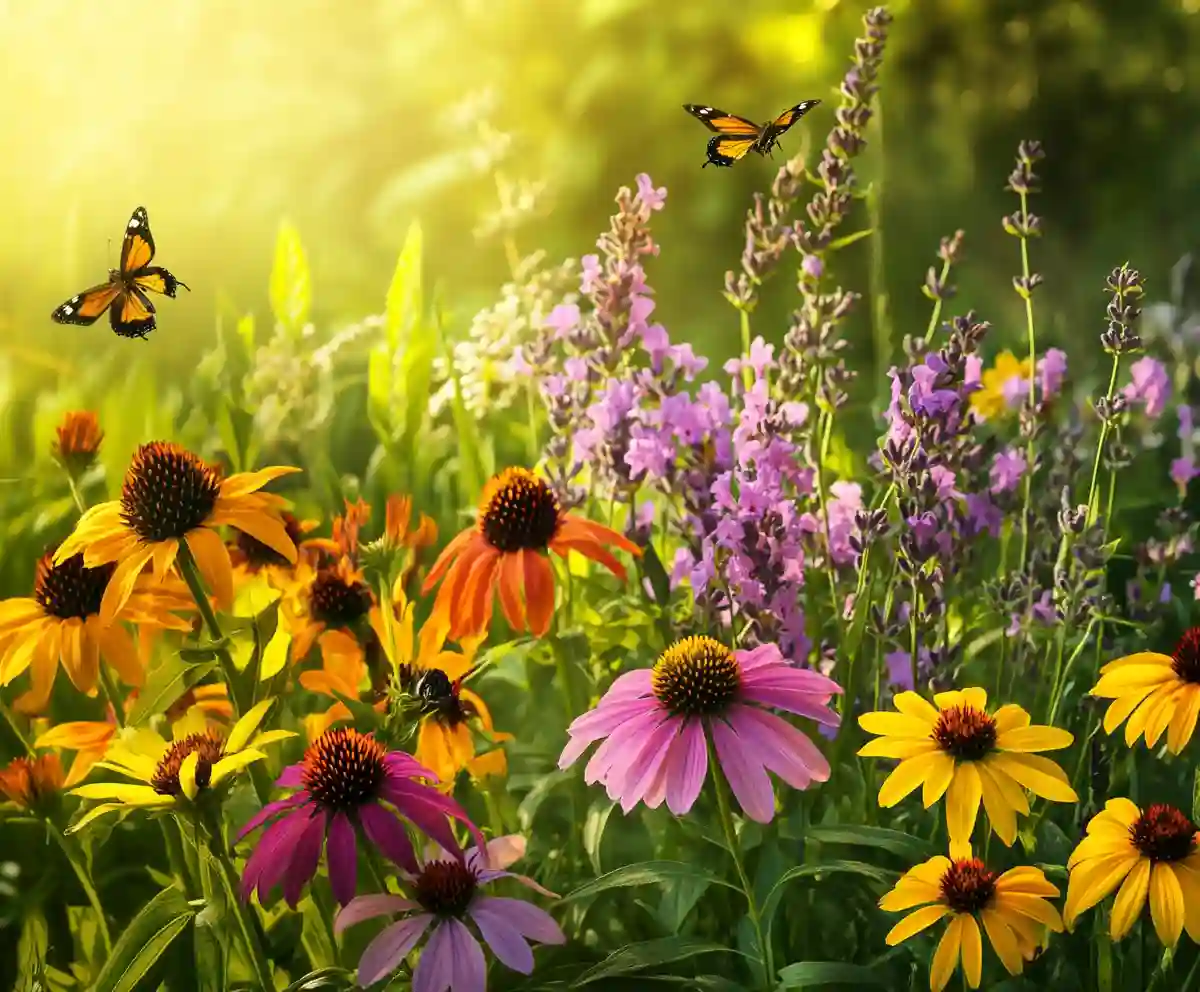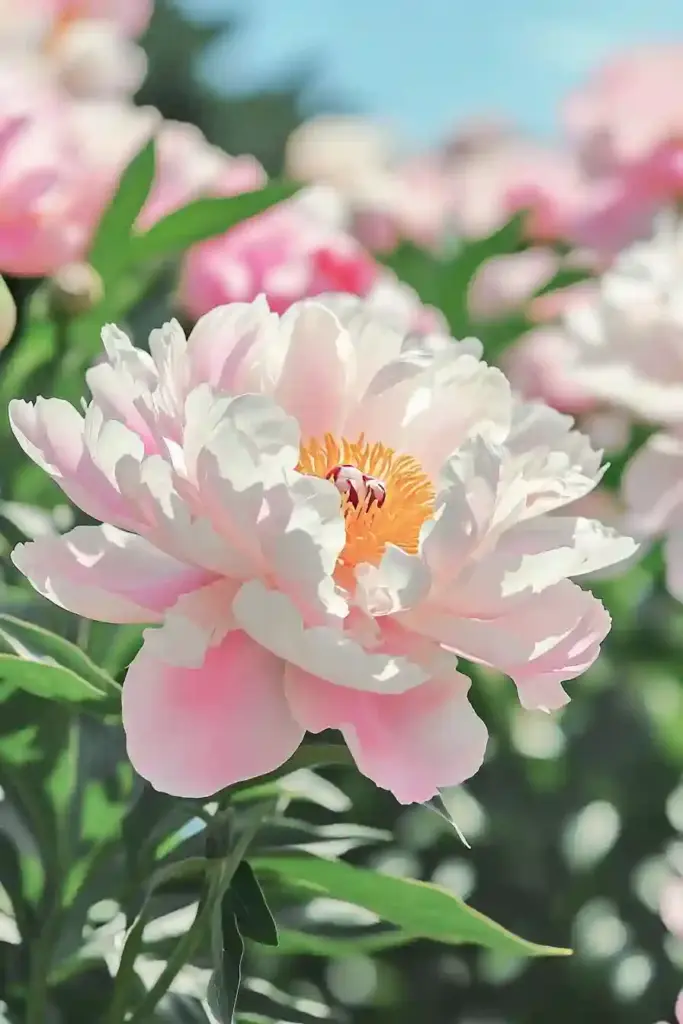If you’ve ever felt the disappointment of your garden losing its charm just as summer hits its stride, you’re not alone. The solution? Fill your beds with perennial flowers that bloom from spring to fall. These dependable bloomers aren’t just beautiful — they’re built to last, coming back stronger each year with little fuss.
Whether you’re a new gardener or a seasoned green thumb, planting long-blooming perennials means enjoying vibrant color and pollinator-friendly blooms for months, not weeks. Let’s dig into the best picks for a blooming garden that starts in spring and keeps on shining into fall.
What Are Perennial Flowers That Bloom From Spring to Fall?
Perennial flowers are the dependable backbone of any beautiful garden. Unlike annuals that complete their life cycle in one season, perennials return year after year, often with even more vigor and beauty than before. But not all perennials are created equal — some only flower for a few short weeks.
That’s where perennial flowers that bloom from spring to fall shine. These superstar plants offer extended blooming periods, often from early spring through late fall, giving your garden constant color without the need for frequent replanting.
Benefits of Long-Blooming Perennials
- Low-maintenance: Most require minimal care once established.
- Cost-effective: No need to buy new plants every season.
- Pollinator-friendly: Attract bees, butterflies, and hummingbirds all season long.
- Versatile: Perfect for borders, beds, containers, or naturalized areas.
Whether you prefer bold reds, soft pastels, or striking purples, there’s a perennial out there that fits your color palette — and will keep blooming for months at a time.
Top Perennial Flowers That Bloom From Spring to Fall
These are the garden champions — vibrant, low-maintenance perennial flowers that provide continuous color across three seasons. 🌼 Each entry includes bloom time, USDA hardiness zones, care tips, and why it deserves a spot in your landscape.
🌸 1. Peonies (Paeonia spp.)
Bloom time: Late spring to early summer
Hardiness: USDA zones 3–8
Peonies are garden royalty for a reason. With lush, romantic blooms and a sweet fragrance, they’re a showstopper in late spring. While their main bloom is brief, well-placed companion plants can extend the peony’s impact throughout the season. Their glossy green foliage sticks around, adding structure and charm all summer and fall.
Care tips:
- Plant in full sun with well-drained soil.
- Avoid deep planting — shallow is best for blooming.
- Divide every 5–10 years for vigor.
🌸 2. Garden Phlox (Phlox paniculata)
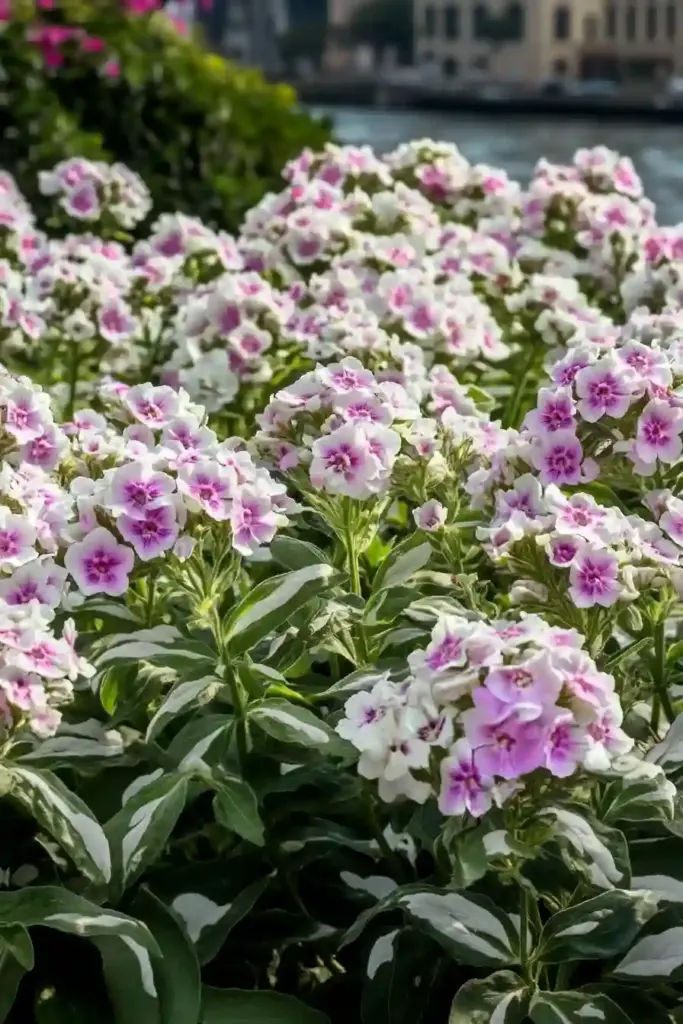
Bloom time: Midsummer to early fall
Hardiness: USDA zones 4–8
Known for its tall clusters of pink, white, or lavender blooms, garden phlox is a long-season favorite. Newer disease-resistant varieties (like ‘David’) offer better foliage and fewer problems with powdery mildew.
Care tips:
- Loves full sun but tolerates part shade.
- Deadhead to extend blooming and reduce self-seeding.
- Ensure good air circulation to prevent disease.
🌹 3. Knock Out Roses (Rosa ‘Radrazz’)
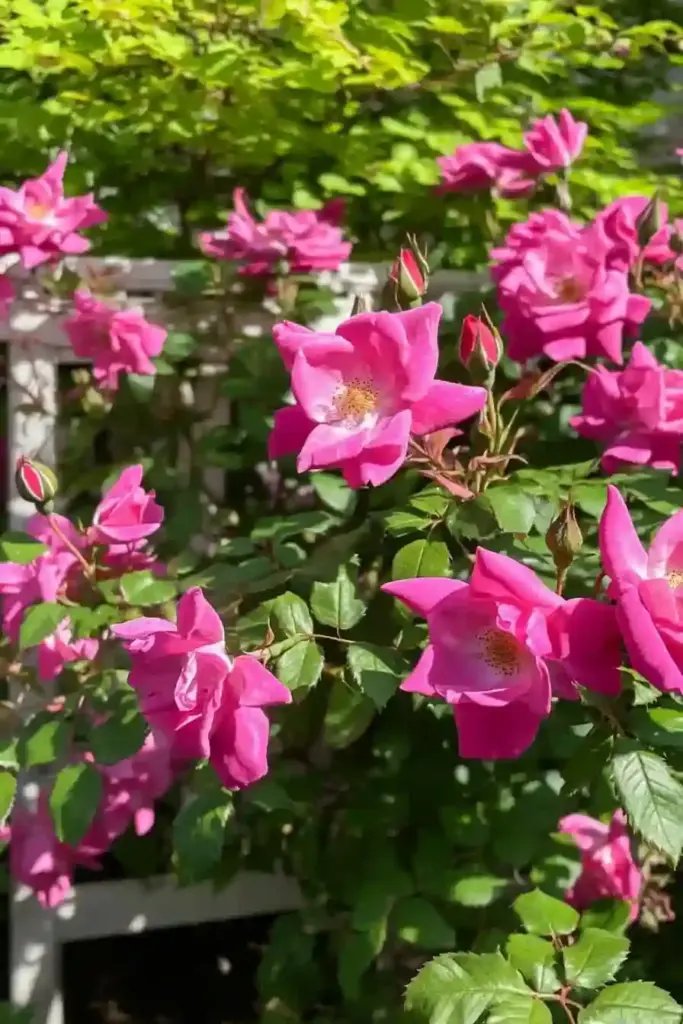
Bloom time: Spring through frost
Hardiness: USDA zones 5–10
Knock Out Roses deliver nonstop blooms in red, pink, or yellow — and require almost no fuss. They’re self-cleaning (minimal deadheading) and highly resistant to disease.
Care tips:
- Needs 6+ hours of sunlight daily.
- Prune in early spring to encourage bushy growth.
- Mulch to retain moisture and suppress weeds.
🌸 4. Catmint (Nepeta spp.)
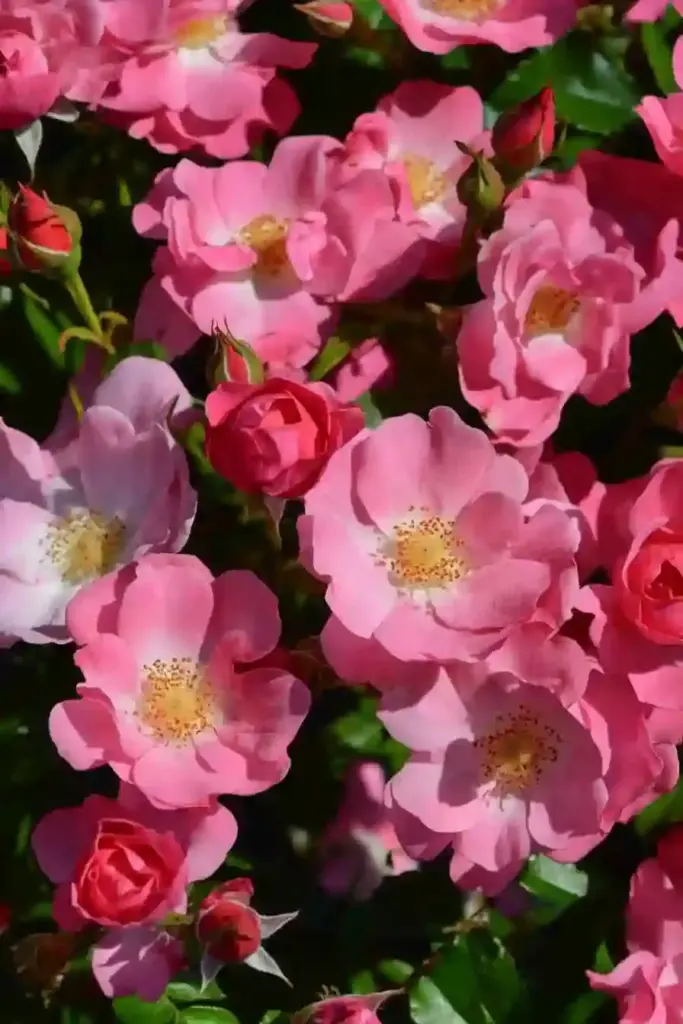
Bloom time: Spring to fall
Hardiness: USDA zones 4–8
With soft, aromatic foliage and endless spikes of lavender-blue flowers, catmint adds a calming vibe to borders. It’s drought-tolerant, deer-resistant, and pollinator-friendly — a win-win for low-maintenance gardeners.
Care tips:
- Grows best in full sun and well-drained soil.
- Trim back after blooming for a fresh flush.
- Great companion for roses or peonies.
🌼 5. Coneflowers (Echinacea spp.)
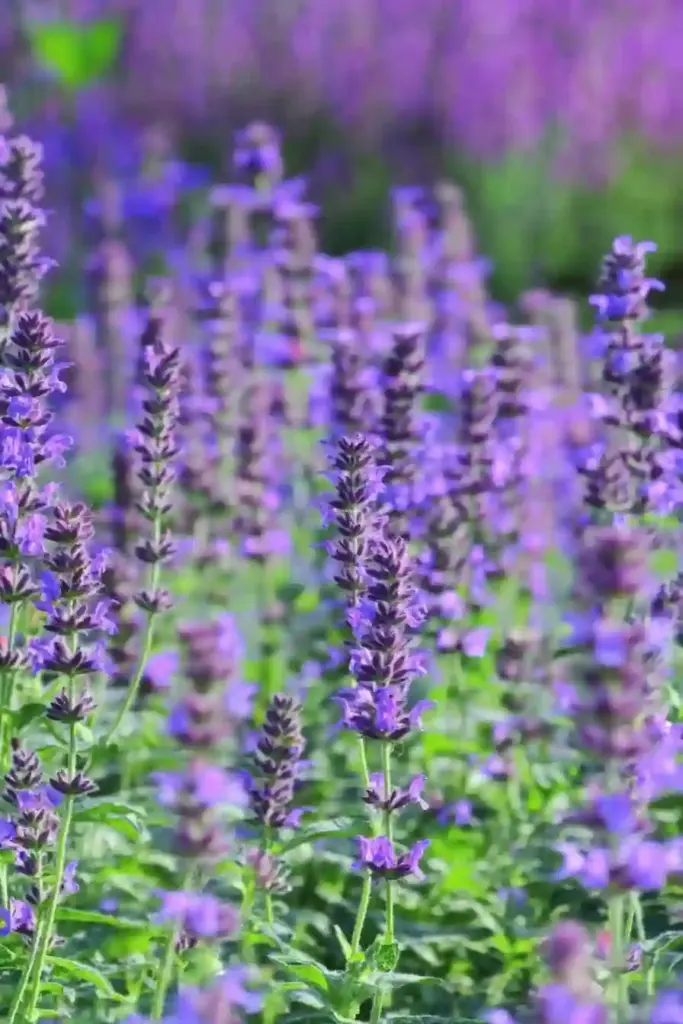
Bloom time: Summer through fall
Hardiness: USDA zones 3–9
Coneflowers are bright, daisy-like blooms that keep pollinators busy all season. Native to North America, they’re built tough — tolerating drought, heat, and poor soil.
Care tips:
- Full sun and well-draining soil are essential.
- Leave seed heads in fall for winter interest and birds.
- Divide every few years to maintain health.
🌹 6. Flower Carpet Roses (Rosa x)

Bloom time: Spring through late fall
Hardiness: USDA zones 4–10
Flower Carpet Roses are ground-covering beauties with dense blooms in coral, pink, yellow, and white. They’re tough, low-growing (2 ft tall), and create a sea of color throughout the season.
Care tips:
- Thrives in full sun.
- Very low-maintenance — ideal for busy gardeners.
- Prune lightly in spring to encourage blooms.
🌿 7. English Lavender (Lavandula angustifolia)

Bloom time: Late spring to early fall
Hardiness: USDA zones 5–8
A classic favorite with its silvery foliage and fragrant purple spikes, English lavender adds structure and scent to borders, paths, and herb gardens.
Care tips:
- Requires full sun and excellent drainage.
- Prune back after flowering to keep shape.
- Avoid overwatering — this plant likes it dry.
🌾 8. Allium (Ornamental Onion)
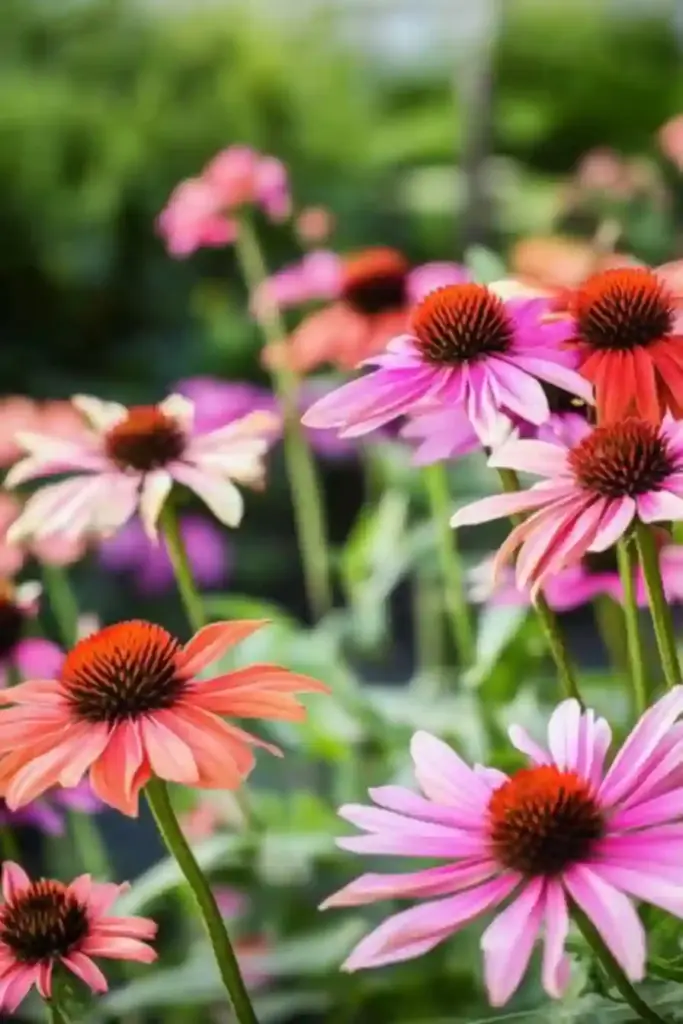
Bloom time: Late spring to early summer
Hardiness: USDA zones 4–8
These quirky, globe-like blooms rise above the foliage on tall stalks, adding architectural interest. Allium pairs beautifully with lower-growing perennials for layered design.
Care tips:
- Plant in fall for spring blooms.
- Prefers full sun and dry to medium soil.
- Allow foliage to die back naturally after blooming.
🌼 9. Ice Plant (Delosperma cooperi)
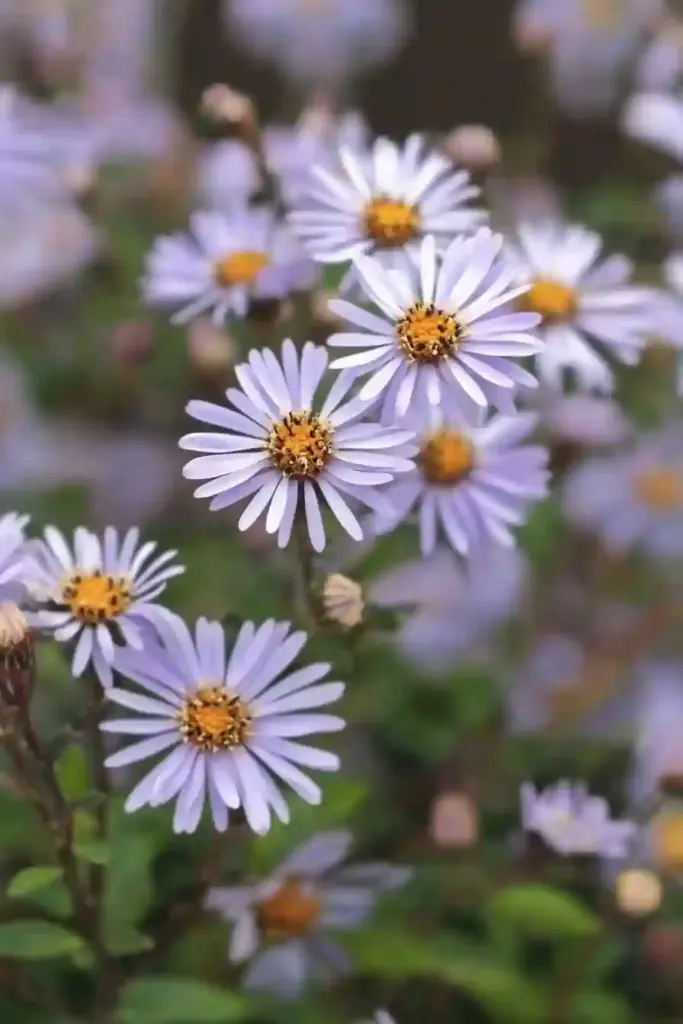
Bloom time: Early summer to frost
Hardiness: USDA zones 6–10 (with care in Zone 5)
This low-growing succulent is perfect for sunny spots and rock gardens. Its vibrant red or purple blooms create a dazzling groundcover from summer to fall.
Care tips:
- Loves full sun and dry soil.
- Water sparingly; drought-tolerant once established.
- Ideal for edging or container planting.
🌸 10. Tatarian Aster (Aster tataricus)
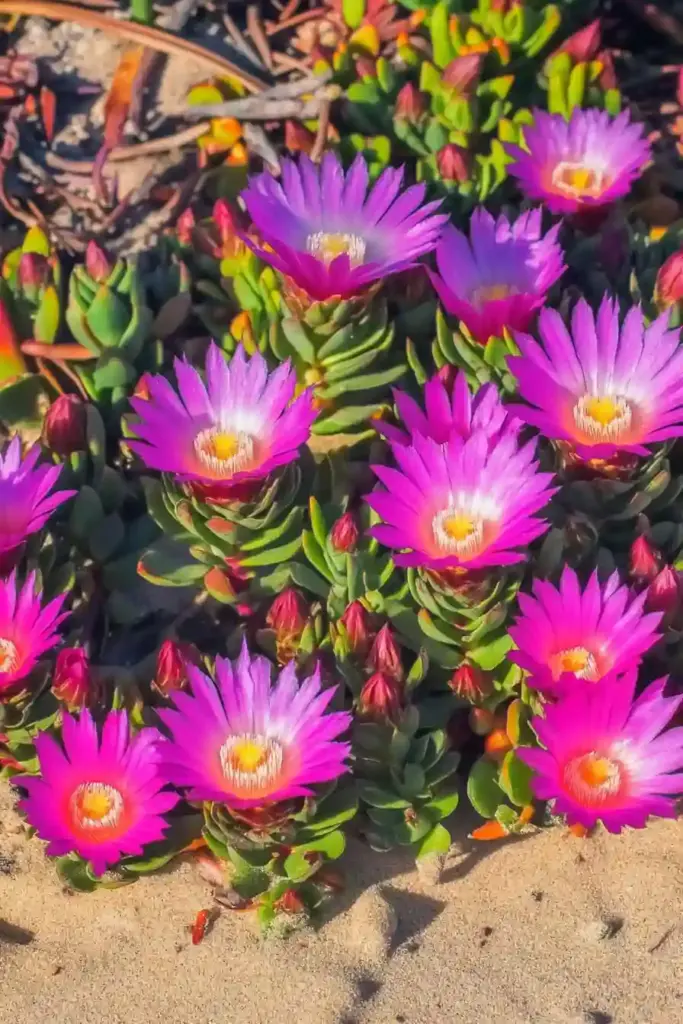
Bloom time: Late summer to fall
Hardiness: USDA zones 3–8
These tall, striking purple asters bloom when other flowers are fading, attracting bees and butterflies right into the cool season.
Care tips:
- Full sun preferred; tolerant of light shade.
- Grows up to 6 feet tall — no staking needed!
- Low-maintenance and drought-tolerant once established.
🌹 11. Drift Roses (Rosa hybrida ‘Drift’)
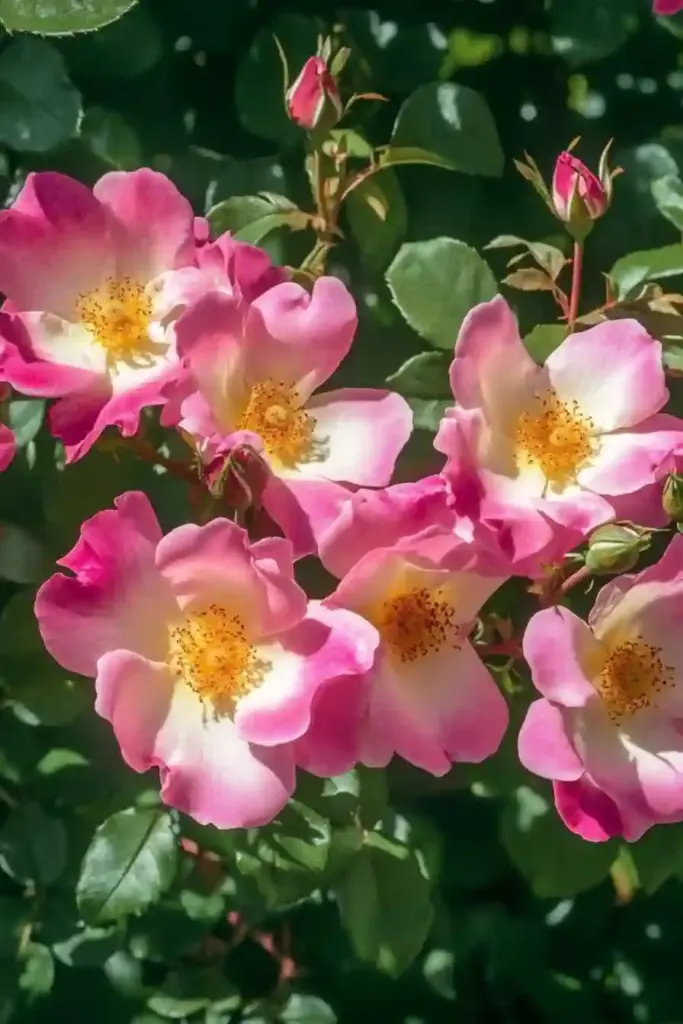
Bloom time: Spring through fall
Hardiness: USDA zones 4–10
A compact alternative to traditional roses, Drift Roses combine the beauty of mini roses with the resilience of groundcover plants. They’re perfect for edging, small spaces, or container gardens.
Care tips:
- Full sun is best for continuous blooms.
- Minimal pruning needed — just shape in early spring.
- Comes in colors like coral, pink, yellow, and peach.
🌼 12. Garden Mums (Chrysanthemums)
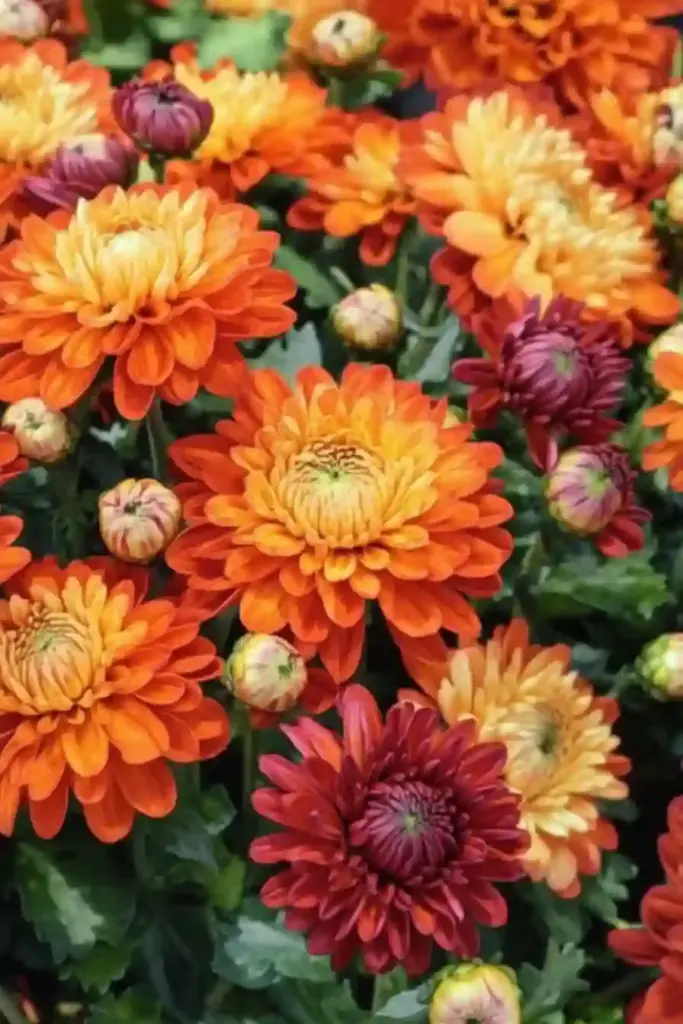
Bloom time: Late summer to fall
Hardiness: USDA zones 5–9
Nothing says “autumn color” quite like mums. These reliable bloomers provide rich bursts of gold, burgundy, and purple — perfect for fall landscapes and container arrangements.
Care tips:
- Plant in spring for the strongest fall performance.
- Pinch back early in the season for bushier growth.
- Water at the base to prevent mildew.
🌸 13. Tickseed (Coreopsis grandiflora)
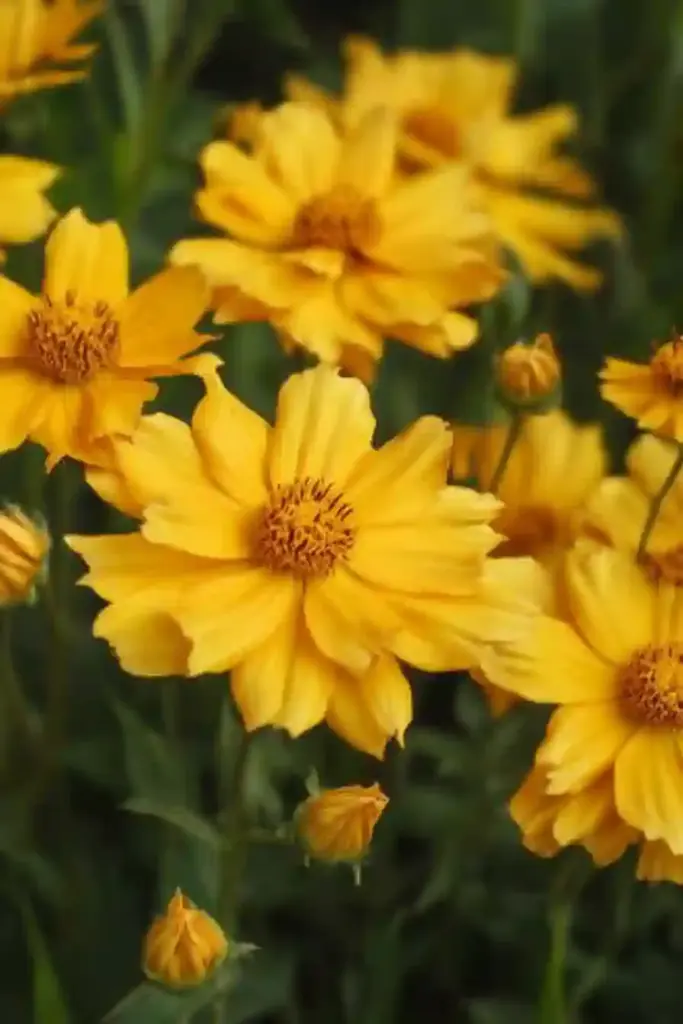
Bloom time: Late spring to fall
Hardiness: USDA zones 4–9
Tickseed’s cheerful yellow or pink blooms bring a pop of sunshine to any garden. It’s one of the easiest perennials to grow and is loved by pollinators.
Care tips:
- Thrives in full sun and well-drained soil.
- Deadhead to prolong blooming into late fall.
- Tolerates poor soil and dry conditions.
🌿 14. Yarrow (Achillea millefolium)
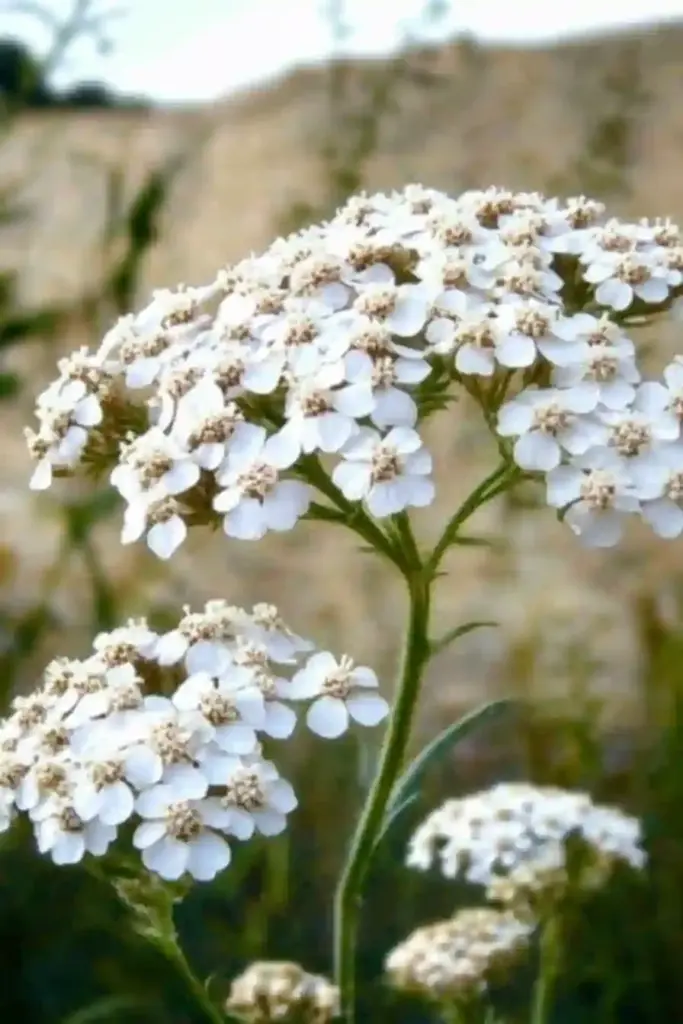
Bloom time: Early summer to fall
Hardiness: USDA zones 3–9
Yarrow’s flat-topped clusters of tiny flowers come in white, yellow, pink, and red. This herbaceous perennial is as tough as it is beautiful — plus, it’s a natural pest repellent.
Care tips:
- Prefers full sun and dry soil.
- Divide every few years to keep clumps healthy.
- Deadhead for a longer blooming season.
💗 15. Fern-Leaf Bleeding Heart (Dicentra ‘Luxuriant’)
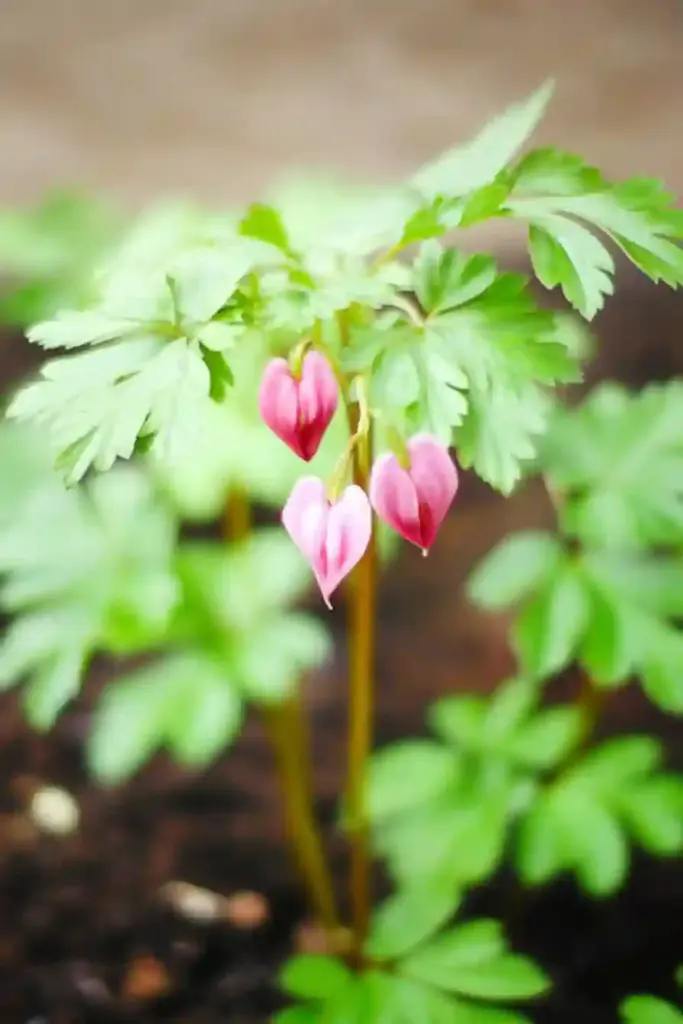
Bloom time: Late spring to early fall
Hardiness: USDA zones 3–9
With delicate, lacy foliage and dangling pink heart-shaped flowers, this unique perennial adds a touch of romance to shady garden spots.
Care tips:
- Grows best in partial shade with moist, well-drained soil.
- Trim back in midsummer if growth becomes leggy.
- Excellent in woodland gardens and containers.
🌿 16. Delphinium (Delphinium spp.)
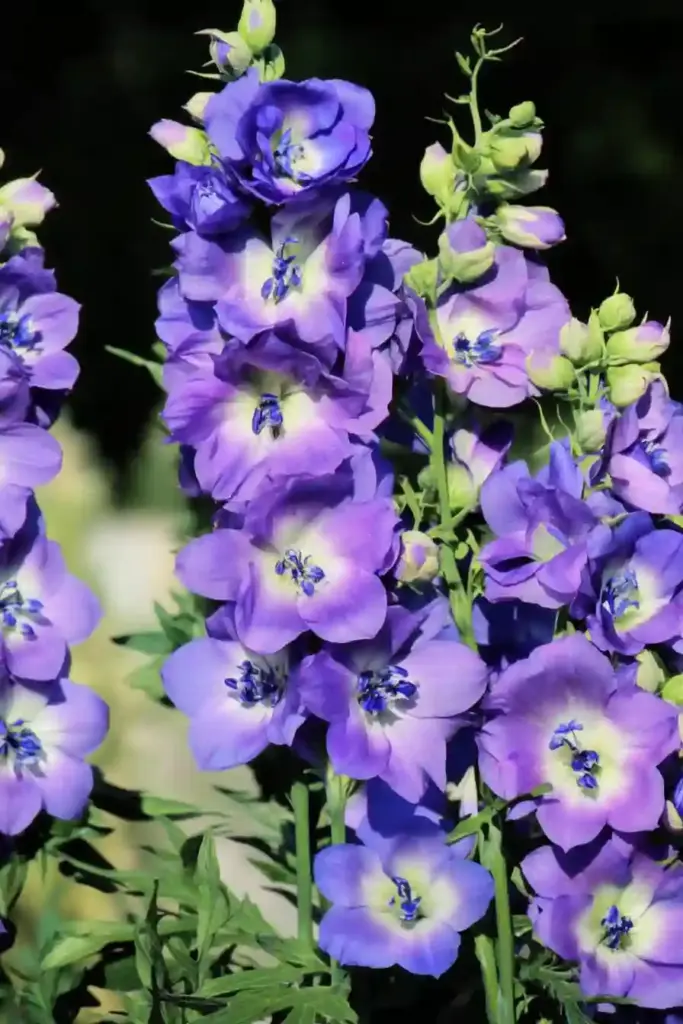
Bloom time: Early summer to fall
Hardiness: USDA zones 3–7
With tall, dramatic spires of blue, purple, or pink flowers, delphiniums make a striking vertical statement in borders or cottage gardens. Though they need a bit more care, their visual impact is well worth it.
Care tips:
- Plant in full sun with rich, well-drained soil.
- Stake taller varieties to prevent flopping.
- Deadhead to encourage reblooming in late summer.
🔮 17. Salvia (Salvia nemorosa)
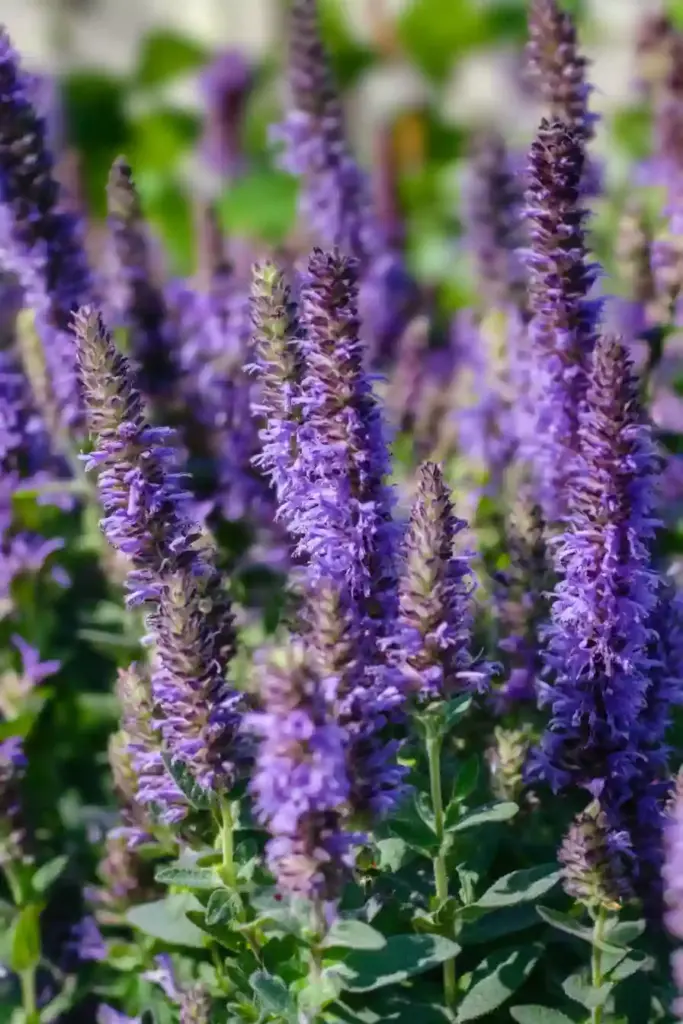
Bloom time: Late spring through fall
Hardiness: USDA zones 4–9
Salvia brings bold spikes of violet, blue, or pink flowers that stand out against green foliage. It’s a magnet for bees and butterflies and handles heat and drought like a champ.
Care tips:
- Needs full sun and well-draining soil.
- Deadhead regularly for continued blooms.
- Pair with ornamental grasses or coreopsis for a bold contrast.
🌼 18. Daylily (Hemerocallis ‘Stella de Oro’)
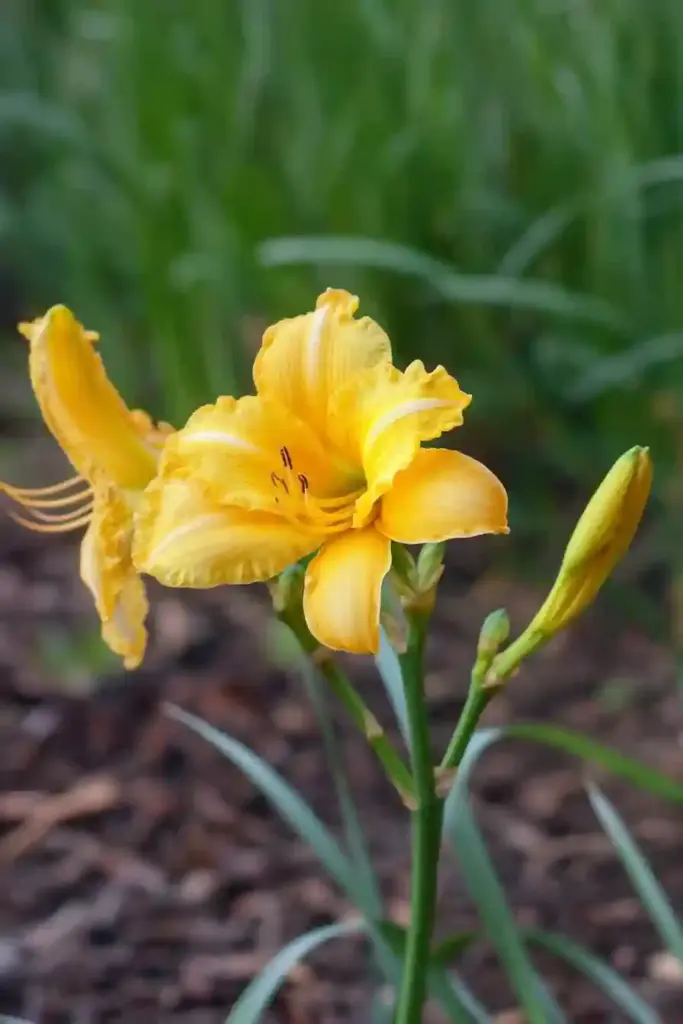
Bloom time: Spring through fall (rebloomer)
Hardiness: USDA zones 3–10
The ‘Stella de Oro’ variety is a gold standard in the garden world — literally! These golden yellow blooms appear repeatedly, with each flower lasting only a day, but new ones appear daily.
Care tips:
- Thrives in full sun to partial shade.
- Cut back spent flower stalks for fresh flushes.
- Drought- and pollution-tolerant — great for urban gardens.
🌸 19. Foxgloves (Digitalis spp.)
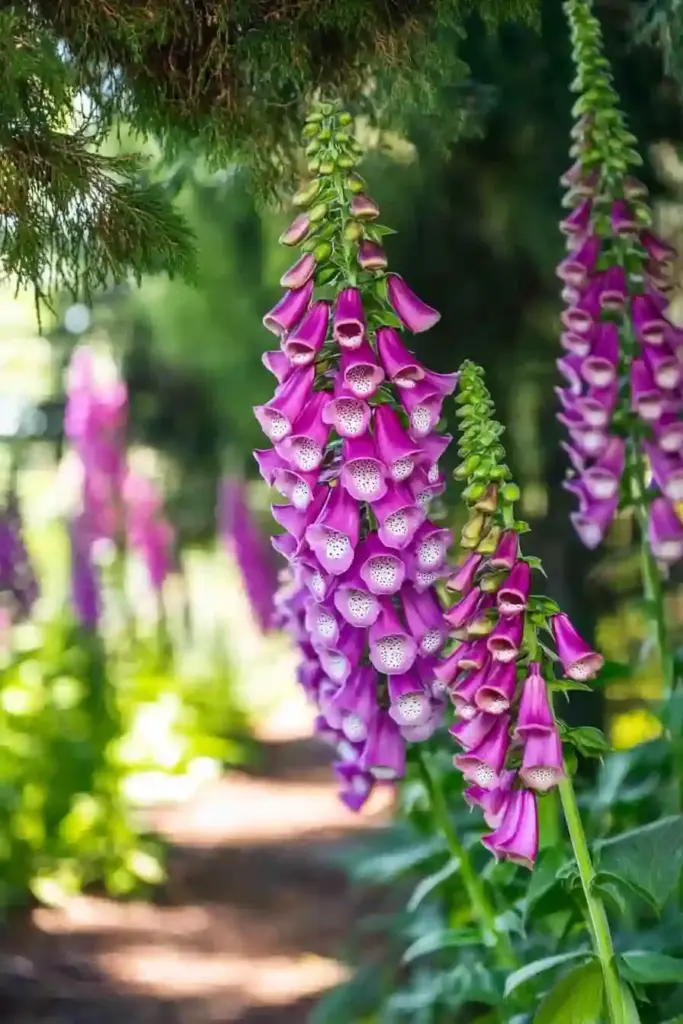
Bloom time: Late spring to midsummer (some varieties rebloom)
Hardiness: USDA zones 4–9
Foxgloves offer tall towers of bell-shaped flowers that add a magical touch to the garden. While many are biennials, some perennial varieties bloom multiple times.
Care tips:
- Prefers partial sun to dappled shade.
- Moist, well-drained soil is key.
- Keep out of reach of pets and kids — they’re toxic if ingested.
🌼 20. Threadleaf Coreopsis (Coreopsis verticillata)

Bloom time: Late spring to early fall
Hardiness: USDA zones 3–9
Threadleaf coreopsis — especially varieties like ‘Moonbeam’ — is a carefree bloomer with dainty, bright yellow flowers and fine, ferny foliage. It’s perfect for softening borders or filling in bare spots.
Care tips:
- Loves full sun and dry, sandy soil.
- Cut back after the first bloom for a second flush.
- Great for mass planting or pairing with purple salvias.
🌼 21. Yellow Fumitory (Corydalis lutea)
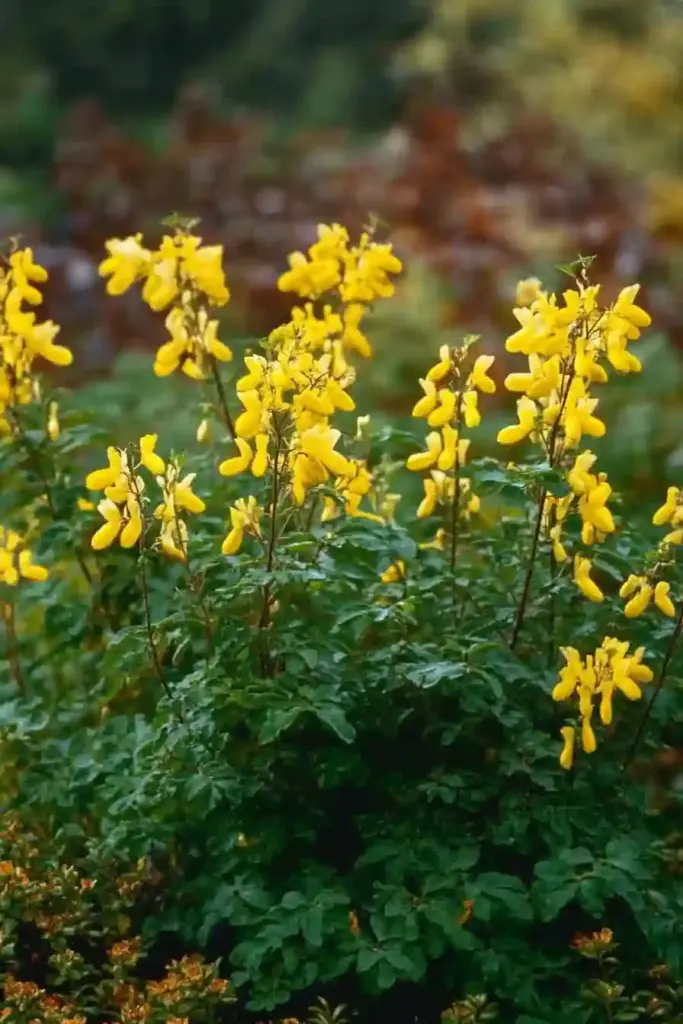
Bloom time: Late spring to frost
Hardiness: USDA zones 4–8
This cheerful perennial produces clusters of golden-yellow blooms that brighten up shady corners of your garden for months. It’s a great filler that naturalizes well and is surprisingly long-blooming.
Care tips:
- Prefers partial shade but tolerates full sun in cooler climates.
- Grows in moist, well-drained soil.
- Self-seeds gently to create lovely drifts over time.
🦋 22. Butterfly Bush (Buddleja spp.)

Bloom time: Midsummer to fall
Hardiness: USDA zones 5–9 (some varieties more cold-hardy)
True to its name, the butterfly bush attracts swarms of butterflies with its honey-scented blooms in shades of purple, pink, and white. It’s a fast grower and excellent for pollinator gardens.
Care tips:
- Needs full sun and well-drained soil.
- Prune in early spring to encourage vigorous growth.
- Deadhead to prevent aggressive self-seeding (or choose sterile cultivars like ‘Blue Chip’).
💜 23. German Bearded Iris (Iris germanica)
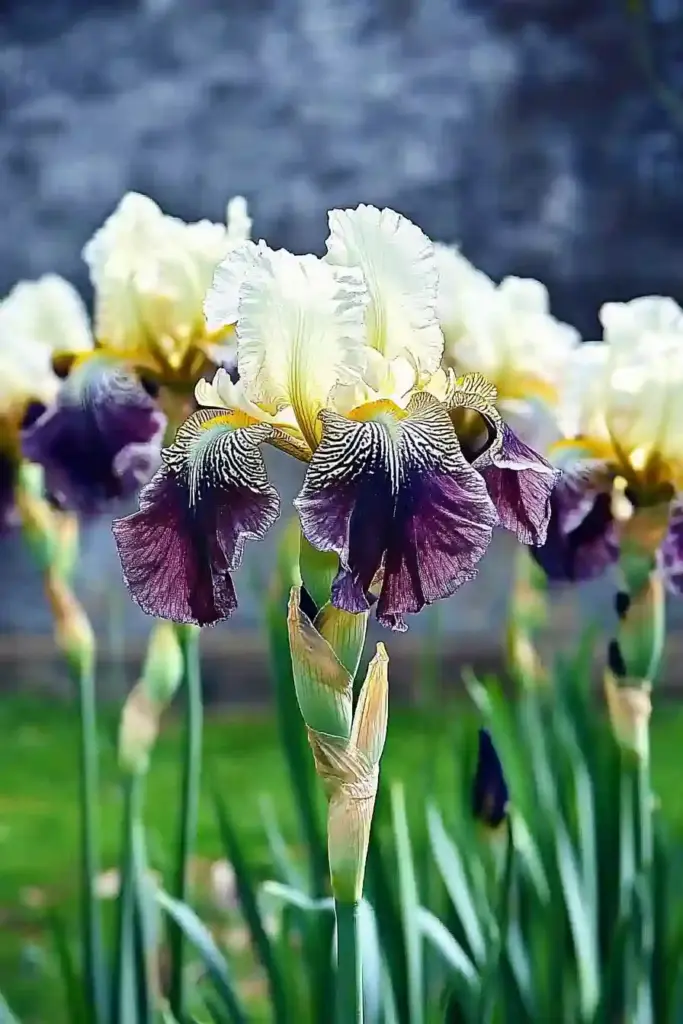
Bloom time: Spring and sometimes fall (reblooming varieties)
Hardiness: USDA zones 3–9
Known for its striking, sword-like leaves and ruffled blooms in every shade imaginable, the bearded iris is a timeless garden favorite. Some varieties even give a second show in late summer or early fall.
Care tips:
- Requires full sun and well-drained soil.
- Don’t bury rhizomes — plant shallowly to avoid rot.
- Divide every 3–5 years to maintain health and bloom.
🔥 24. Dragon Wing Begonia (Begonia x hybrida ‘Dragon Wings’)
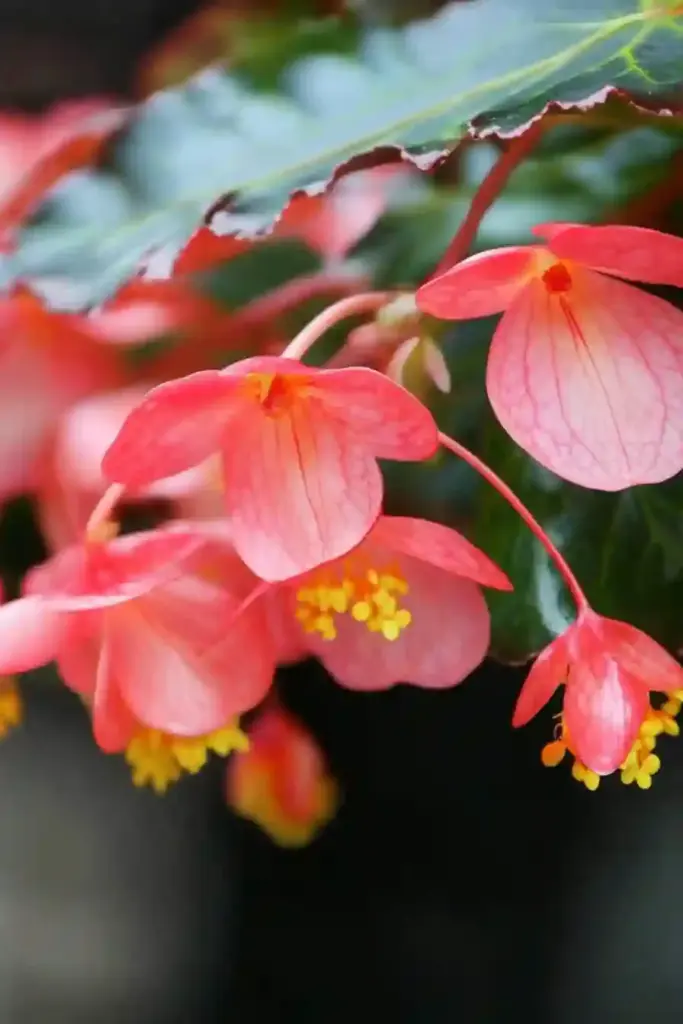
Bloom time: Late spring to frost
Hardiness: USDA zones 10–11 (treated as annual in colder zones)
These hybrid begonias produce bright red blooms and glossy green foliage nonstop until frost. Though not cold-hardy, they’re perennials in warm climates or excellent annuals elsewhere.
Care tips:
- Prefers partial shade and rich, moist soil.
- Great for containers or shady beds.
- Bring indoors or grow as houseplants in cooler regions.
🌻 25. Black-Eyed Susan (Rudbeckia hirta)
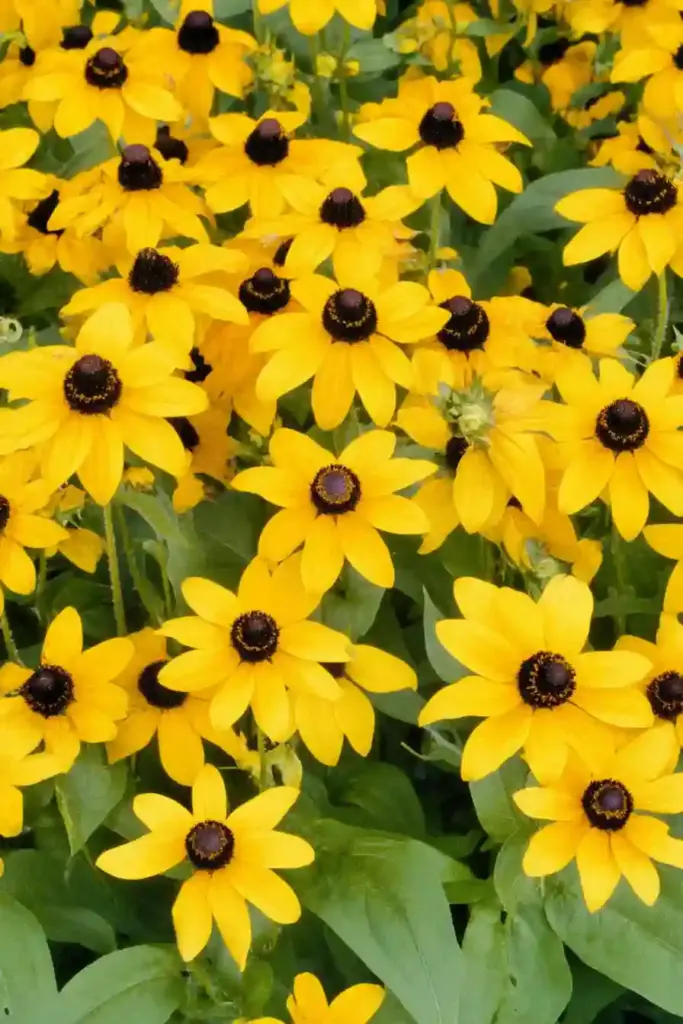
Bloom time: Mid-summer to fall
Hardiness: USDA zones 3–7
A beloved American classic, Black-Eyed Susans offer bold golden petals with dark centers that bloom reliably for months. They’re sturdy, adaptable, and loved by pollinators.
Care tips:
- Full sun is best; tolerates drought once established.
- Deadhead to prolong bloom and prevent excessive self-seeding.
- Pairs beautifully with echinacea, grasses, and salvia.
Essential Growing & Care Tips for Perennial Flowers That Bloom From Spring to Fall
Creating a garden full of long-blooming perennials isn’t just about choosing the right plants — it’s also about giving them the right care so they can thrive from season to season. Here’s how to set your garden up for success:
☀️ Sunlight & Placement
Most of these flowering perennials thrive in full sun, needing at least 6–8 hours of direct light per day. A few varieties (like bleeding hearts and yellow fumitory) do well in partial shade, especially in hot climates.
Quick tip:
Group full-sun plants together and place shade-tolerant varieties along the edges or under taller perennials.
🌱 Soil Prep & Drainage
Well-drained soil is essential. Whether sandy, loamy, or even clay-based, the soil must allow water to drain freely to prevent root rot.
Improve drainage by:
- Mixing compost or organic matter into your soil
- Elevating garden beds
- Using mulch to retain moisture and regulate temperature
💧 Watering Wisely
Once established, most perennials on this list are drought-tolerant. But young plants need consistent watering during their first growing season.
Watering guidelines:
- Water deeply, but infrequently
- Morning is the best time to water
- Avoid wetting the foliage to prevent disease
✂️ Deadheading & Pruning
Deadheading — removing faded blooms — encourages many perennials to produce new flowers instead of going to seed.
Plants that benefit from deadheading:
- Salvia
- Coreopsis
- Coneflower
- Phlox
- Delphinium
Pruning tip: Cut plants back by one-third in midsummer if they start looking tired — many will bounce back with fresh blooms.
🍂 Dividing & Replanting
Every 2–4 years, divide clump-forming perennials to:
- Prevent overcrowding
- Revive blooming performance
- Share plants with fellow gardeners
Best time to divide:
- Spring: For summer/fall bloomers
- Fall: For spring bloomers
🌡️ Climate & Hardiness Zones
Check USDA hardiness zones for each plant to match your region. Many on this list tolerate cold winters and hot summers, but a few (like begonias and butterfly bush) may need protection or annual treatment in colder zones.
Winter care:
- Add mulch around root zones
- Avoid cutting foliage too early — it protects the crown
- Pot delicate perennials and overwinter indoors if needed
Conclusion: Let Your Garden Bloom All Season Long
Planting perennial flowers that bloom from spring to fall is one of the smartest ways to build a colorful, low-maintenance garden that brings joy from the first warm days of spring to the last golden weeks of autumn.
Whether you love bold, eye-catching colors or soft, romantic textures, there’s a long-blooming perennial that fits your vision. By choosing the right mix of sun-loving and shade-tolerant varieties, and following a few simple care steps, you can enjoy a vibrant, pollinator-friendly garden that comes back better year after year.
So go ahead — mix, match, plant, and play! Your forever-blooming garden is just a season away.
🌿 Love gardening inspiration? Follow me on Pinterest for bold plant ideas, tips, and seasonal color!
More Posts
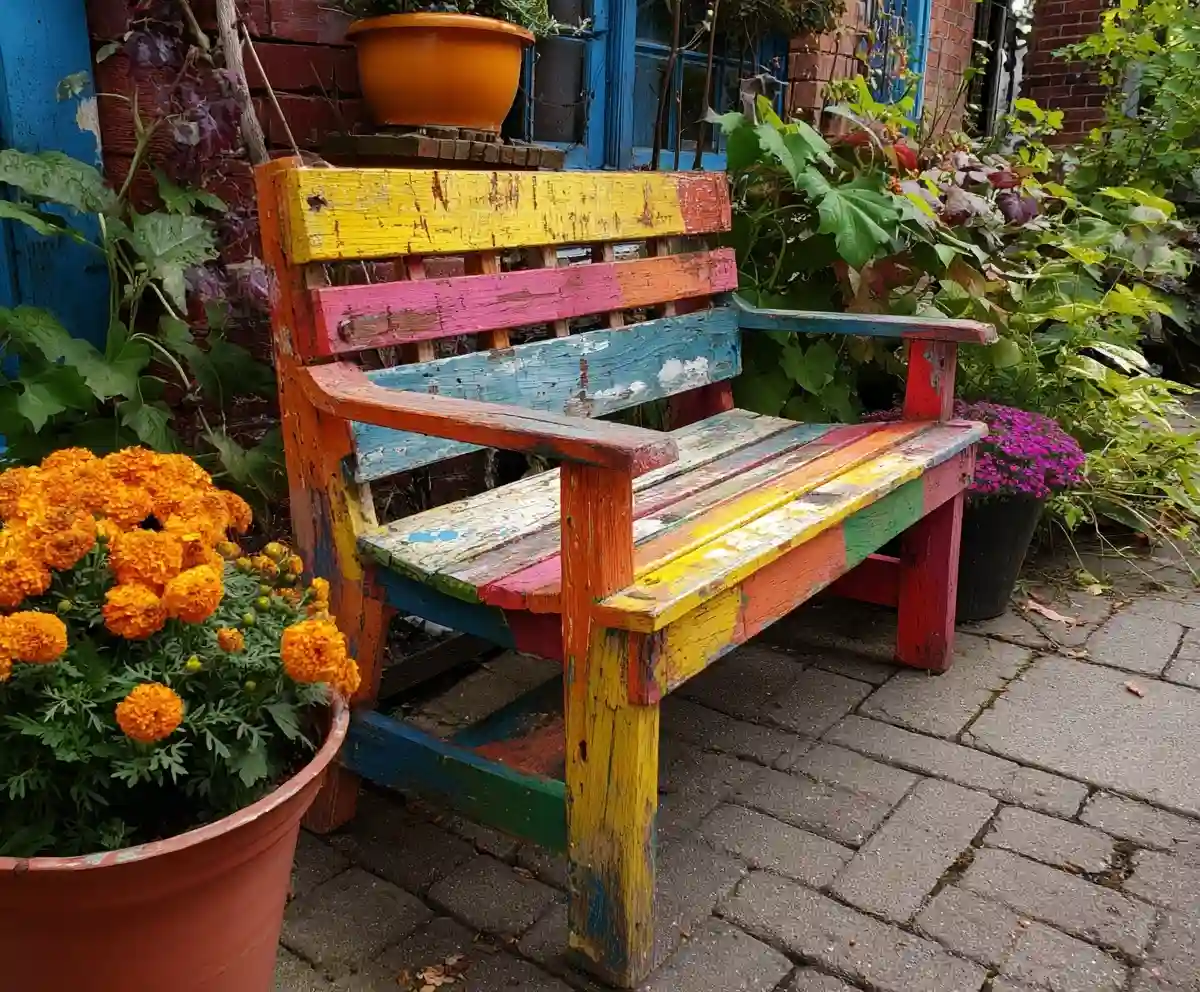
19+ Budget-Friendly Backyard Makeover Ideas
Backyard makeover ideas can turn even the most ordinary outdoor space into a warm, inviting retreat—without draining your wallet.
Read More →
21 Stunning & Simple DIY Clematis Trellis Designs
DIY clematis trellis designs are a beautiful way to blend creativity with function in your garden.
Read More →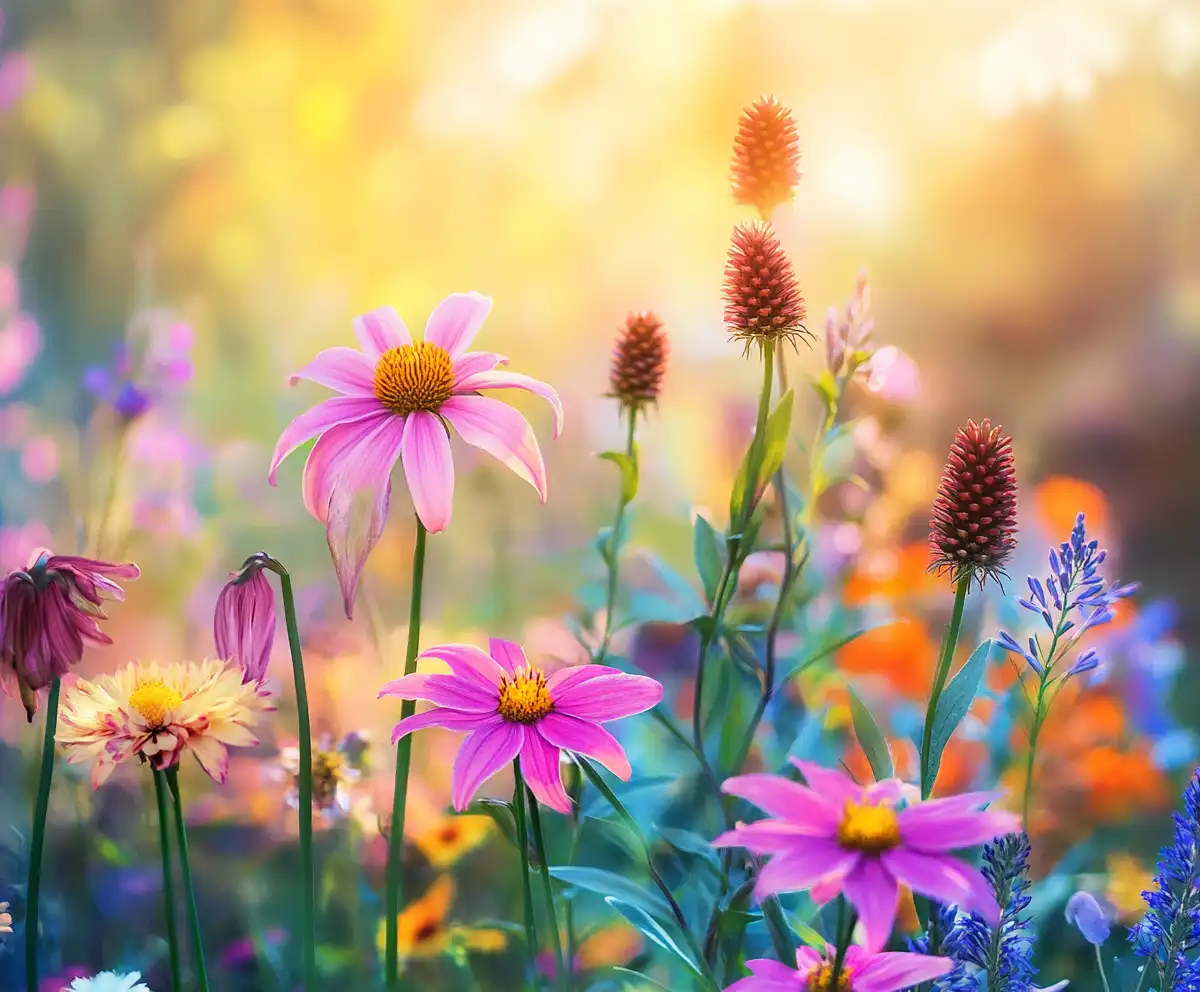
12 Full Sun Perennials That Bloom All Summer
Explore a selection of hardy perennials that flourish and bloom beautifully in full sun throughout the summer.
Read More →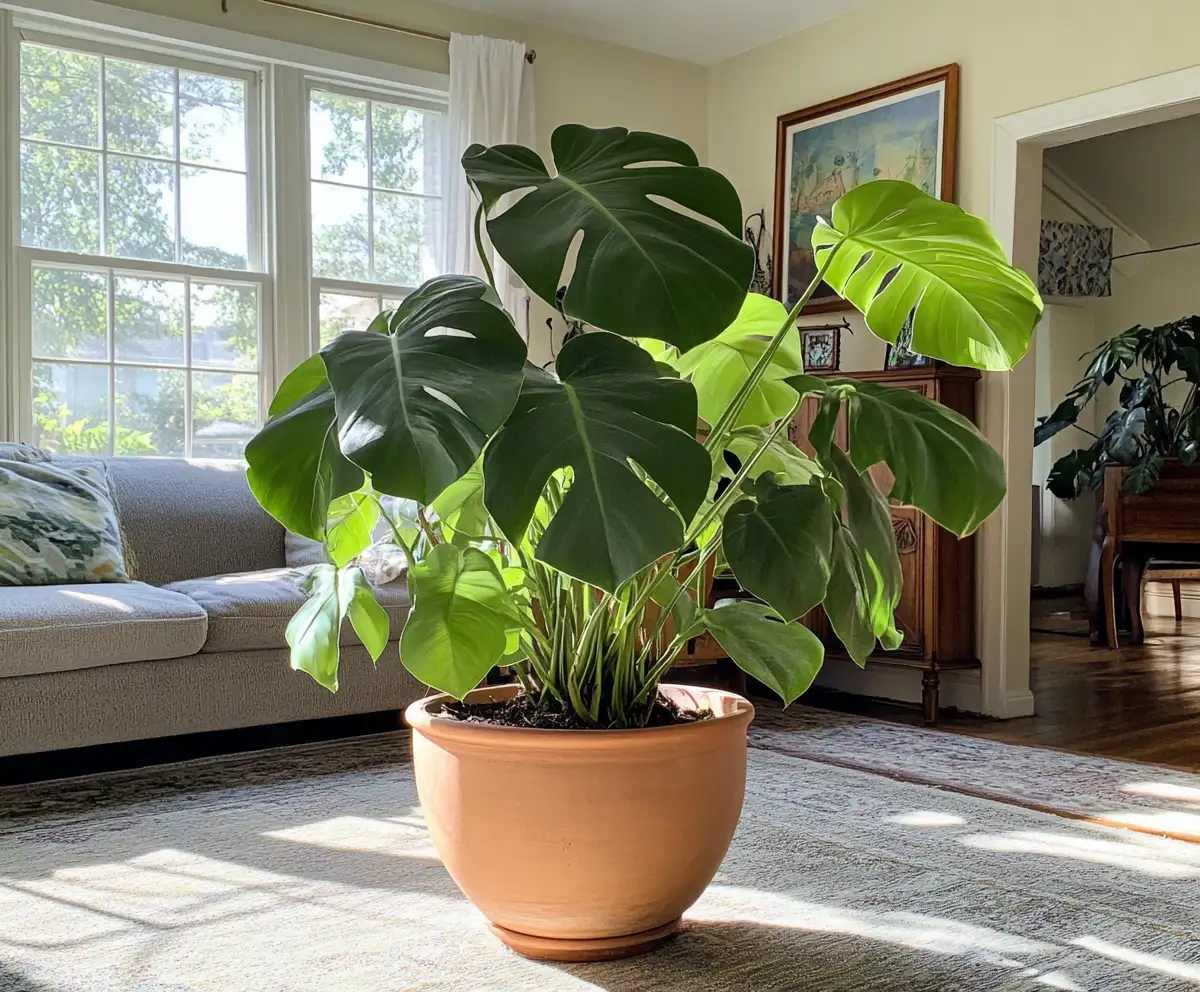
Houseplants for Living Room
Find the perfect houseplants to brighten and purify your living room while adding a touch of nature indoors.
Read More →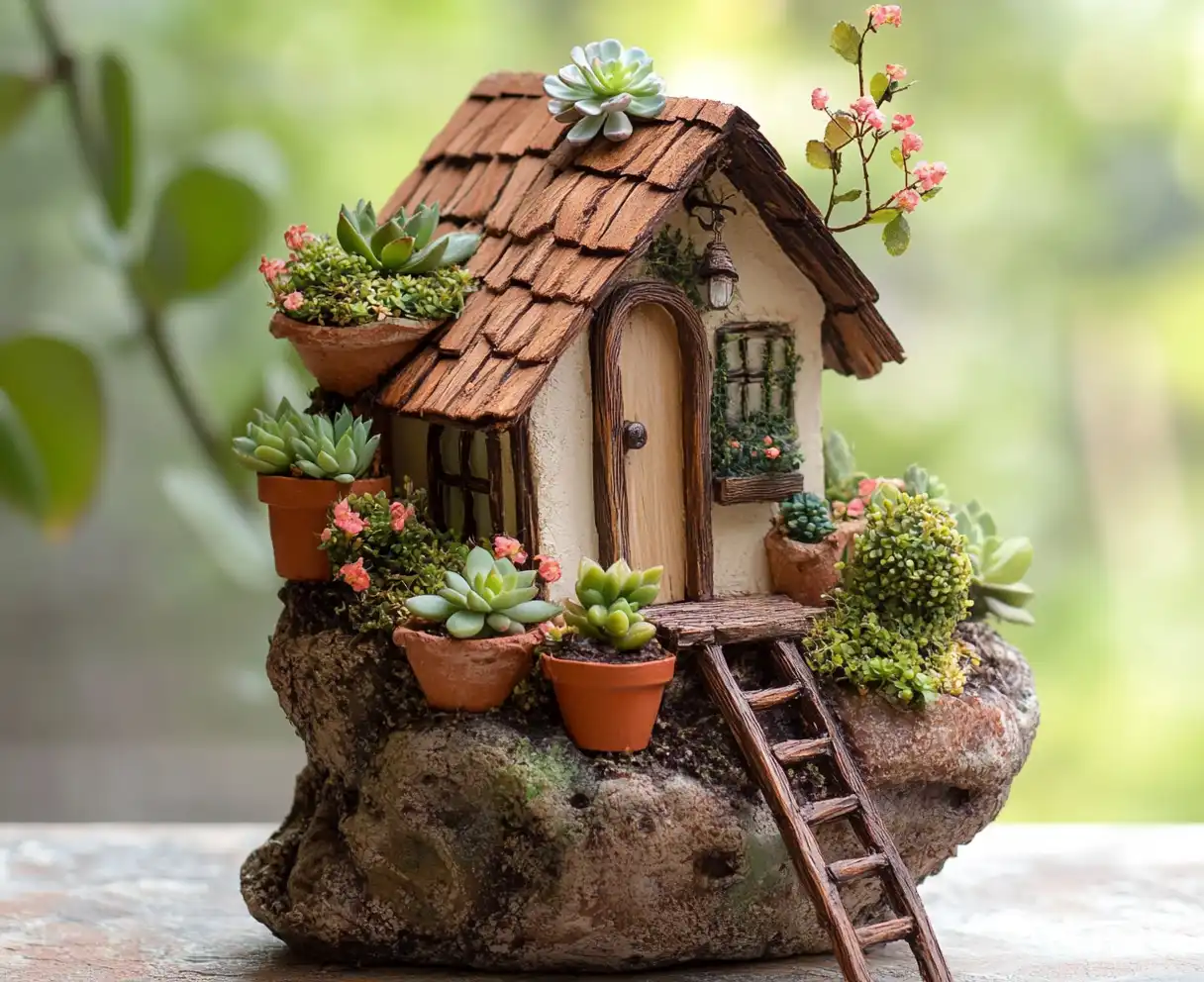
Backyard Play Area for Kids
Create a fun and safe backyard play area for kids with these inspiring design ideas and tips.
Read More →
Top Privacy Trees
Discover top tree varieties that provide natural privacy and enhance your outdoor space.
Read More →
